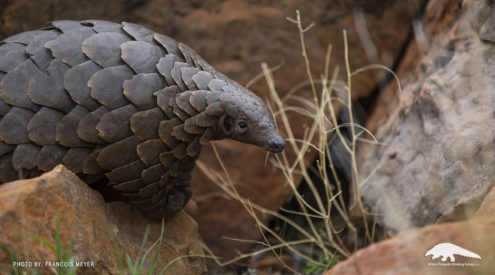Butterflies are the bimbos of the natural world. Their flight paths meander like pulses of idle thought, pure and seemingly unencumbered by direction from a brain as small as a full stop.
They’re prodigiously diverse – around 18 000 species – without being adventurous. All behave very much alike, flitting from flower to flower, there to sup on sweet nectars through a toothless tube that rolls out like a party squeaker. Their wings are covered in tiny prisms and mirrors that trick light into gorgeous iridescence – six-legged worms strung between outrageously coloured kites.
The ancient Greeks saw in their gossamer lightness a likeness to the elusive human soul and in their hesitant flight its reluctance to move to the next world. The Greek word ‘psyche’ means both soul and butterfly – the Latin word anima has the same dual meaning.
For toga-clad students of Lepidoptera, the transformation of a caterpillar into a butterfly provided a model for their ideas of death, burial and resurrection. On the southeast Asian island of Java, butterfies are thought to be the form your soul takes to dream.
Sweet, innocent, gentle, graceful, predictable; no wonder they’re so god-awfully boring. But wait, there’s one that doesn’t fit the mould. Calculating in caterpillar mode, dangerous in colour, scornfully slow in flight, so poisonous it makes some birds vomit just seeing it – here’s a butterfly with character. And, like all species that tip the balance firmly in their favour, it’s everywhere.
Monarch butterflies are beautiful. Their orange wings are veined in black and edged with white spots which continue over their bodies; colours that are equivalent to a swagger and show a finger to caution. The males have black spots on their secondary wings which exude pheromonic perfumes that make females go moggy. Right at the tips of their delicate feelers are little orange welcome lamps.
What gives monarchs their special character, however, is their universal obsession with a poisoned chalice called milkweed. There are 140 species of the plant and around 300 species of monarch butterfly, which ensures an abiding relationship between the two on every continent other than Antarctica.
The milkweed genus is Asclepias, named by Carl Linnaeus after the Greek god of healing. As is often the case in folk medicine, there’s a fine line between healing and killing. Medicinal Plants of South Africa lists the value of milkweed as snuff and a cure for tuberculosis, stomach ache, asthma, typhus, coughs and general pain. It adds, rather quixotically, that the plant contains poisonous cardiac glycosides which can cause the death of livestock and humans. Bushmen used it to tip their poisoned arrows.
A medical dictionary lists the effects as nausea, vomiting, headache, anorexia, visual disturbances and heart slowdown. It warns that, ‘The dose range between therapeutic and toxic levels is small.’
All of this is good news for the monarch, which lays its eggs on milkweed. Their larvae hatch with a ravenous appetite and proceed to devour the plant with no ill effect – an achievement that no doubt took millions of years of natural selection to achieve, with untold zillions of dead larvae.
When the worms are fat and ready, they glue their tails to a leaf and form blue and gold pupae that hatch into butterflies filled with cardiac glycosides. All this requires clement weather. In the United States, when winter sets in, hundreds of millions of monarchs head south to warmer sites in Mexico and southern California thousands of kilometres away where they literally cover trees with their quivering beauty. In Africa, however, winters don’t bother them, so they stay put.
But here’s a puzzle. Birds eating monarchs have been seen throwing up shortly afterwards, so they’re clearly not good to eat. And the survival strategy of poison-free butterflies such as mocker swallowtails and viceroys is to look like monarchs in order to deter predators.
But there are also reports of monarchs being eaten with no ill effects. Butterfly researcher André Coetzer was recently quite excited to photograph a praying mantis in a Johannesburg park chewing on a hapless monarch. In Mexico, certain birds known to avoid the butterflies further north have been seen snacking on hibernating monarchs down south.
A study written by Colorado State University researcher Kim Pike may have the answer. She found that as monarchs age, the toxins in their system fade to below the danger level for predators.
But in one of those delightful twists of nature, its colouring signals its former poisonous self. Predators don’t know the difference and only taking a chance will tell them. Most have learned the hard way and never do. But some, like André’s praying mantis, are prepared to have a go.
Did the mantis get lucky or throw up? ‘It was getting dark,’ he said, ‘I didn’t stay to watch.’
















